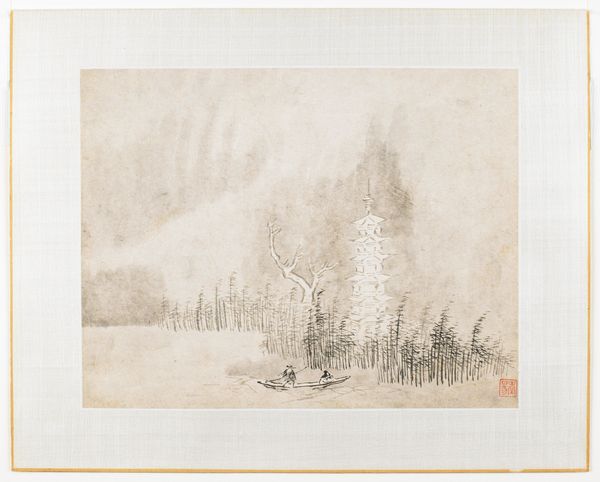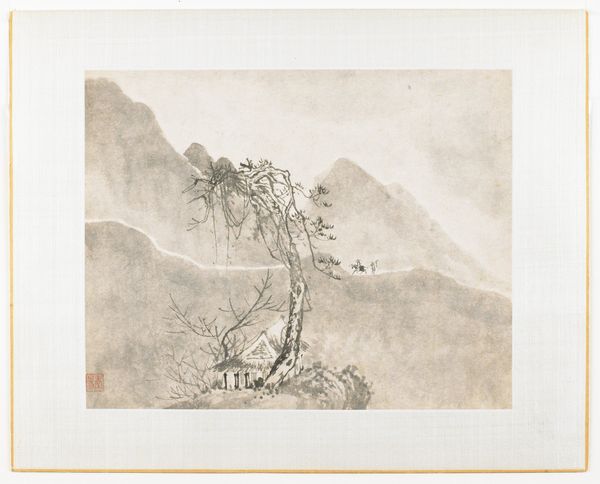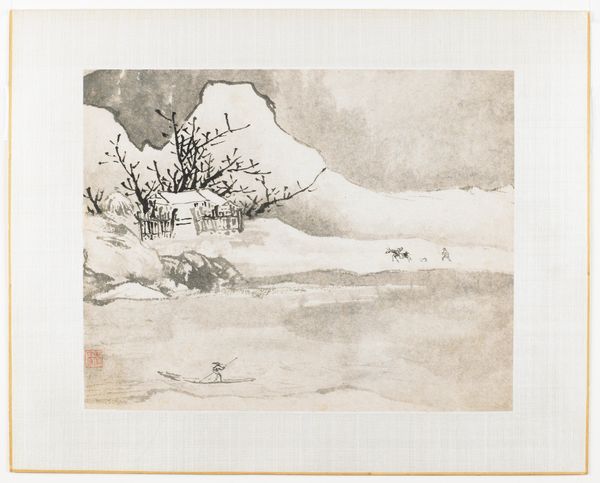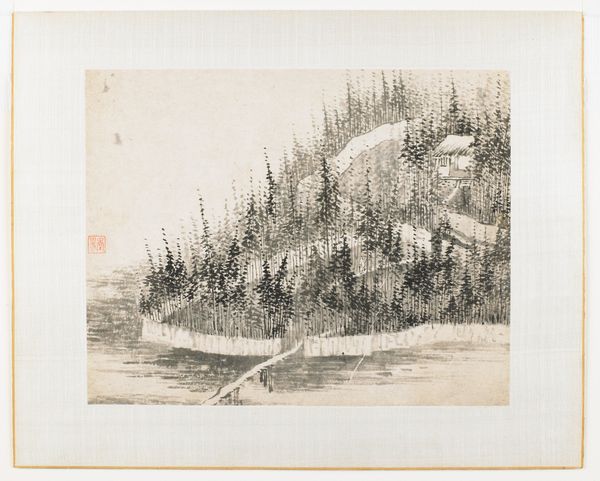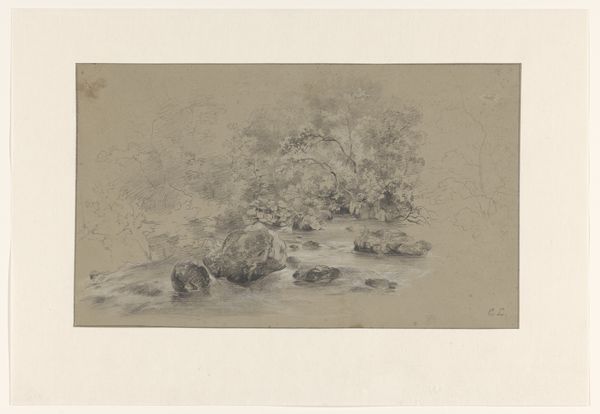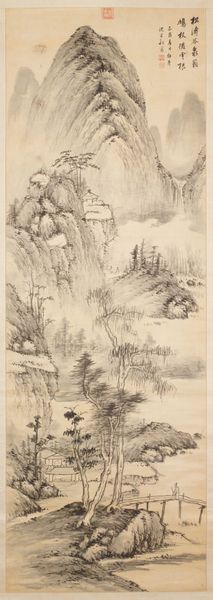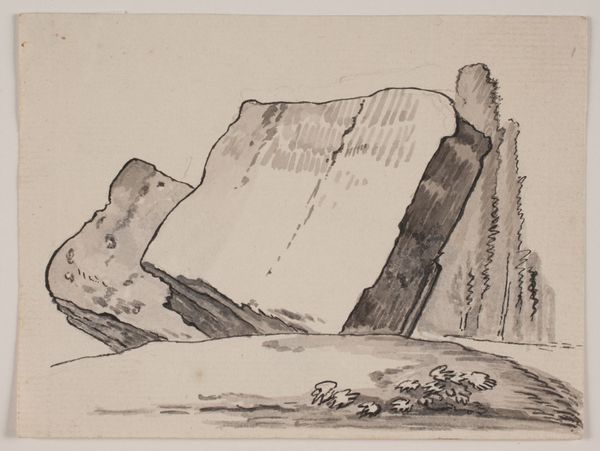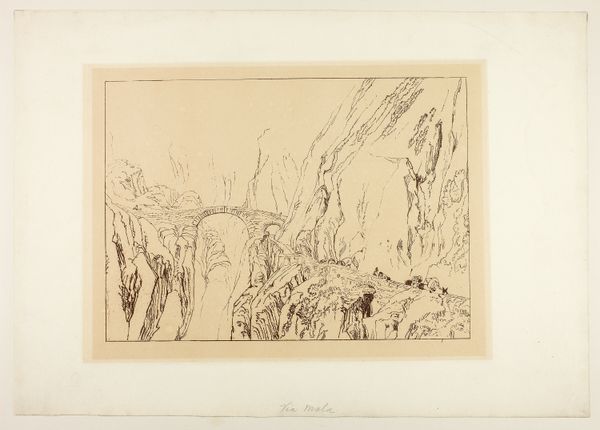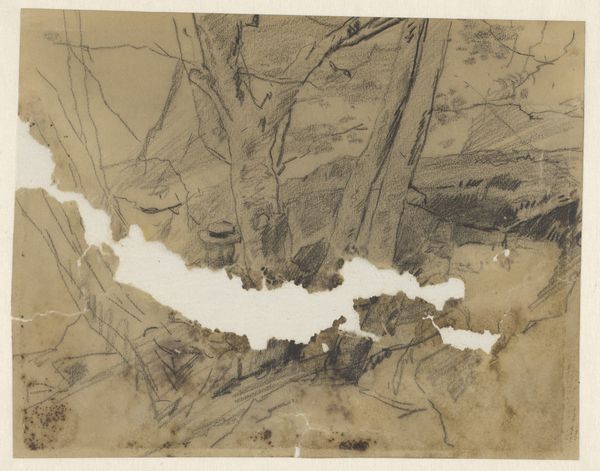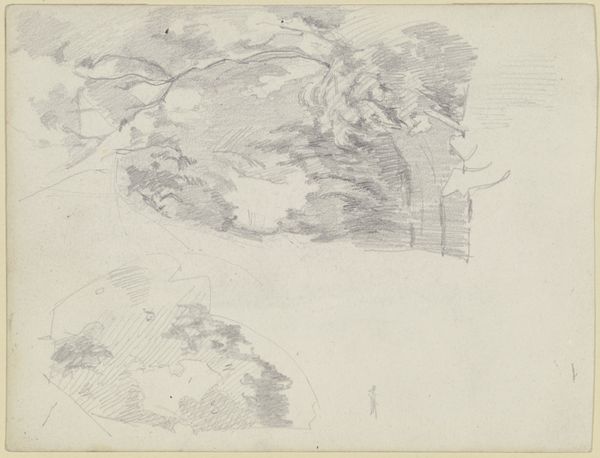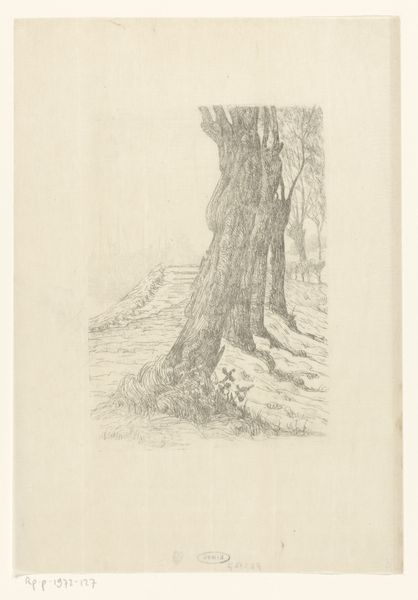
drawing, paper, ink-on-paper, ink
#
drawing
#
ink painting
#
asian-art
#
landscape
#
leaf
#
paper
#
ink-on-paper
#
ink
#
ink drawing experimentation
#
china
#
line
Dimensions: 7 3/4 x 9 3/4in. (19.7 x 24.8cm)
Copyright: Public Domain
Curator: Allow me to draw your attention to Cheng Jiasui’s "Bridge Between Rocks," likely created around 1630. It's an ink-on-paper drawing held here at the Minneapolis Institute of Art. Editor: Oh, what a wonderfully ethereal vision! Those towering rocks sort of loom, yet there's this curious, calming effect. It almost feels like a dream, or a half-remembered scene from childhood. Curator: That's quite astute. Chinese landscape paintings often weren't about depicting specific places but rather about evoking moods and philosophical ideas. The tiny figures dwarfed by the landscape emphasizes the individual's place within the vastness of nature. Editor: The bridge becomes a symbol, doesn't it? A passage between states, a connector of disparate elements. Is it a real bridge or a metaphor for spiritual crossing, an allusion of leaving this world for the divine? It looks so fragile, yet essential. And it looks so isolated! Curator: Exactly! Bridges often appear in Chinese art to symbolize the journey of life or the search for enlightenment. Cheng Jiasui was a prominent figure during the late Ming Dynasty, a time of considerable social upheaval. Perhaps he was seeking solace and escape within the natural world, a retreat from the turmoil of his time. Editor: I see that—those dark ink splotches on the rock face look like weathering, and add such a haunting quality. It feels like even stone, even the mightiest of mountains, are slowly giving way to the ravages of time. Curator: The intentional use of empty space is also quite powerful. In Chinese painting, empty space isn't just nothingness. It represents potential, the boundless energy of the universe. It invites the viewer to participate, to fill in the gaps with their own imagination and experiences. Editor: The artist plays with our perception. What’s in front? What’s behind? The figures on the bridge create an ambiguity I really enjoy. We're left contemplating not just the scene, but also our place within it. I wonder, is that little leaf there near the top a suggestion to slow down our thinking? Or something else? Curator: Perhaps. Cheng Jiasui leaves us much to ponder. A delicate image rendered in ink on paper invites us to engage not merely as observers, but as pilgrims crossing our own metaphorical bridges. Editor: I think I’ll take his advice and be slower today, let the scenery of my inner life speak. Thanks for illuminating the path, so to speak!
Comments
No comments
Be the first to comment and join the conversation on the ultimate creative platform.
